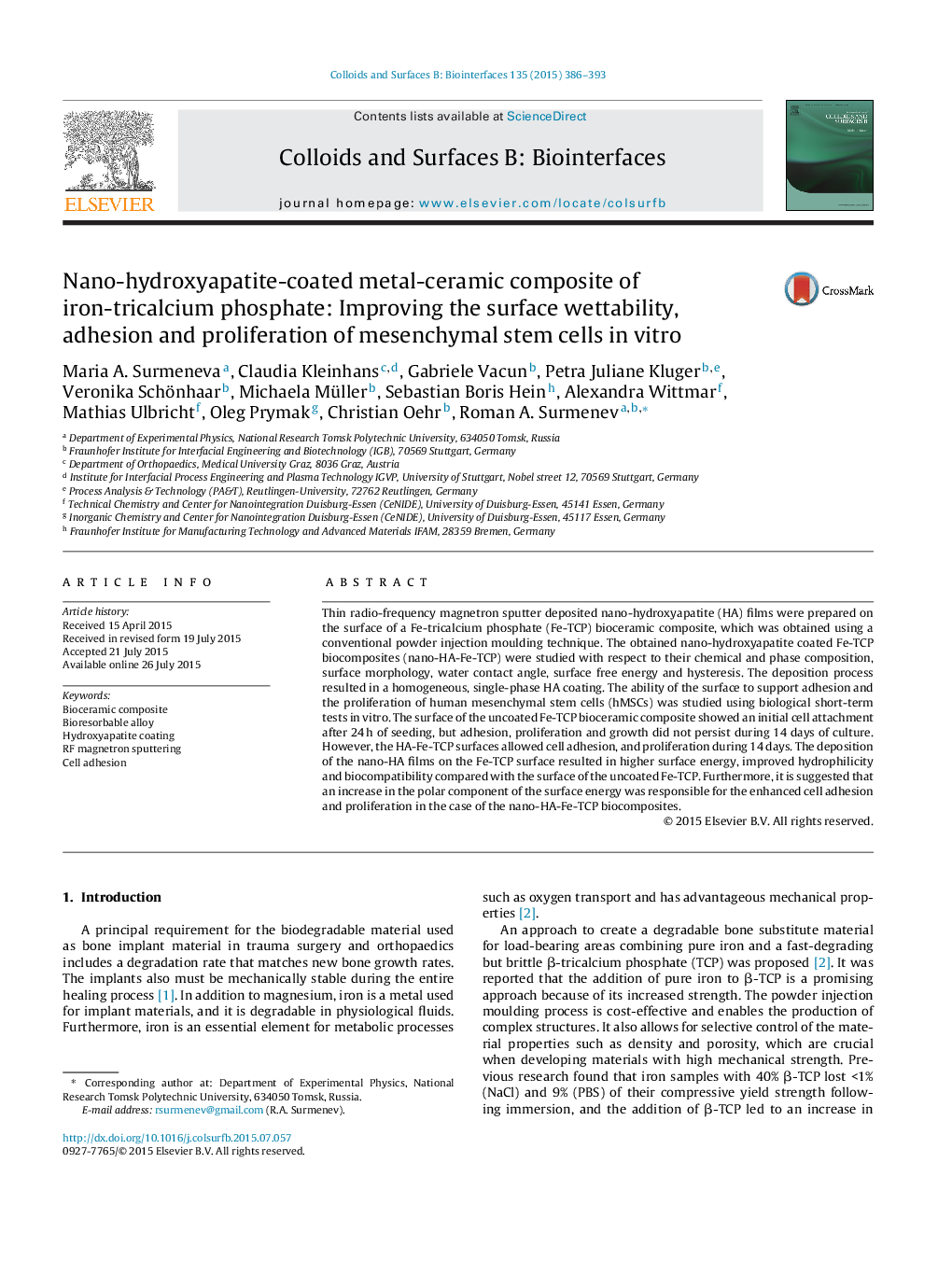| Article ID | Journal | Published Year | Pages | File Type |
|---|---|---|---|---|
| 599256 | Colloids and Surfaces B: Biointerfaces | 2015 | 8 Pages |
•Hydroxyapatite (HA) coating was prepared on resorbable Fe-TCP bioceramic composite.•HA coating improved the adhesion and proliferation of human mesenchymal stem cells.•Surface hydrophilicity was enhanced with coating deposition.•Polar component of the surface energy positively affected cell behaviour.
Thin radio-frequency magnetron sputter deposited nano-hydroxyapatite (HA) films were prepared on the surface of a Fe-tricalcium phosphate (Fe-TCP) bioceramic composite, which was obtained using a conventional powder injection moulding technique. The obtained nano-hydroxyapatite coated Fe-TCP biocomposites (nano-HA-Fe-TCP) were studied with respect to their chemical and phase composition, surface morphology, water contact angle, surface free energy and hysteresis. The deposition process resulted in a homogeneous, single-phase HA coating. The ability of the surface to support adhesion and the proliferation of human mesenchymal stem cells (hMSCs) was studied using biological short-term tests in vitro. The surface of the uncoated Fe-TCP bioceramic composite showed an initial cell attachment after 24 h of seeding, but adhesion, proliferation and growth did not persist during 14 days of culture. However, the HA-Fe-TCP surfaces allowed cell adhesion, and proliferation during 14 days. The deposition of the nano-HA films on the Fe-TCP surface resulted in higher surface energy, improved hydrophilicity and biocompatibility compared with the surface of the uncoated Fe-TCP. Furthermore, it is suggested that an increase in the polar component of the surface energy was responsible for the enhanced cell adhesion and proliferation in the case of the nano-HA-Fe-TCP biocomposites.
Graphical abstractFigure optionsDownload full-size imageDownload as PowerPoint slide
